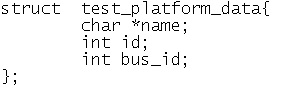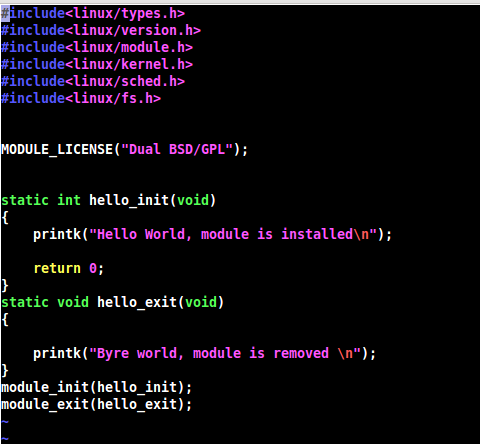Hello Folks, today i am going to talk about the PCI subsystem and Process of developing PCI based Device driver.
PCI is a local bus standards, which used to attach the peripheral hardware devices with the Computer system. So it defines how different peripherals of a computer should interact. A parallel bus which follows PCI standards is knows as PCI bus. PCI stands for Peripheral Component Interconnect.
The devices which are connected to PCI bus are assigned address in the processor’s address space. This memory(addresses in processor’s address space) contains control, data and status registers for the PCI based device, which is shared between CPU and PCI based device. This memory will be controlled by the device driver/kernel to control the particular device connected over PCI bus and share information with it. PCI device became like a memory mapped device.
The PCI address domain contains the three different type of memory which has to be mapped in the processor’s address space.
1. PCI Configuration Address space
Every PCI based device has a configuration data structure that is in the PCI configuration address space. The length of configuration data structure is 256 bytes. This data structure used by system/kernel to identify the type of device. The location of this data structure is depend upon the slot number where the device is connected on the board. eg. Device on slot 0 has its configuration data structure on 0x00 but if you connect same device on slot 1 its configuration data structure goes to 0xff. You can get more details about layout of this configuration data structure here.
At power on, the device has no memory and no I/O ports mapped in the computer’s address space. The firmware initializes PCI hardware at system boot by mapping each region to a different address. By accessing PCI controller register, the addresses to which these regions are currently mapped can be read/write from the configuration space, By the time a device driver accesses the device, its memory and I/O regions have already been mapped into the processor’s address space.
So To access configuration space, the CPU must write and read registers in the PCI controller. Linux provides the standard API to to read/write the configuration space. The exact implementation of this API is vendor dependent.
int pci_read_config_byte(struct pci_dev *dev, int where, u8 *val);
int pci_read_config_word(struct pci_dev *dev, int where, u16 *val);
int pci_read_config_dword(struct pci_dev *dev, int where, u32 *val);
The above APIs are used to read the different size of data configuration space. The first argument is the pci device node, the second argument is the byte offset from the beginning of configuration space and third argument is the buffer to store the value.
int pci_write_config_byte(struct pci_dev *dev, int where, u8 val);
int pci_write_config_word(struct pci_dev *dev, int where, u16 val);
int pci_write_config_dword(struct pci_dev *dev, int where, u32 val);
The above APIs are used to wirte the different size of data configuration space. The first argument is the pci device node, the second argument is the byte offset from the beginning of configuration space and third argument is a value to write.
2. PCI I/O address space
This is 32 bit memory space which can be access by using CPU IO access instructions. PCI devices place their registers for control and status in PCI I/O space.
3. PCI memory Address space
This is 32 bit or 64 bit memory space which can be access as the normal memory locations. The base address of the this memory space is stored in the BAR register. The PCI memory space have higher performance than access to PCI I/O space.
Specification of I/O and memory address is device depended. I/O and memory address can be access by normal memory read write operations.
We have gone through the basic memories region of PCI device. Now its time to understand the different initialization phase of the of PCI devices.
Linux kernel devices the PCI initialization in to three phase.
1. PCI BIOS : It is responsible for performing all common PCI bus related task. Enable the access to PCI controlled memory. In some CUP architecture it allocate the interrupts for PCI bus.
2. PCI Fixup : It maps the configuration space, I/O space and Memory space to the RAM. Amount of memory for I/O region and memory region can be identified from the BAR registers in configuration space. In some of CPU architecture Interrupts are allocated at this stage. It also scan all the bus and find out the all present devices in the system and create pci_dev structure for each present device on the bus.
3. PCI Device Driver : The device driver registers the driver with product Id and vendor Id. The PCI subsystem checks for the same vendor Id and product id in its list of devices registered at the Fixup phase. if it gets the device with same product Id and vendor Id the it initialize the device by calling the probe function of driver which registers further device services.
So, this was just an overview of the how PCI based devices works with the Linux kernel.
Stay tunes !!














